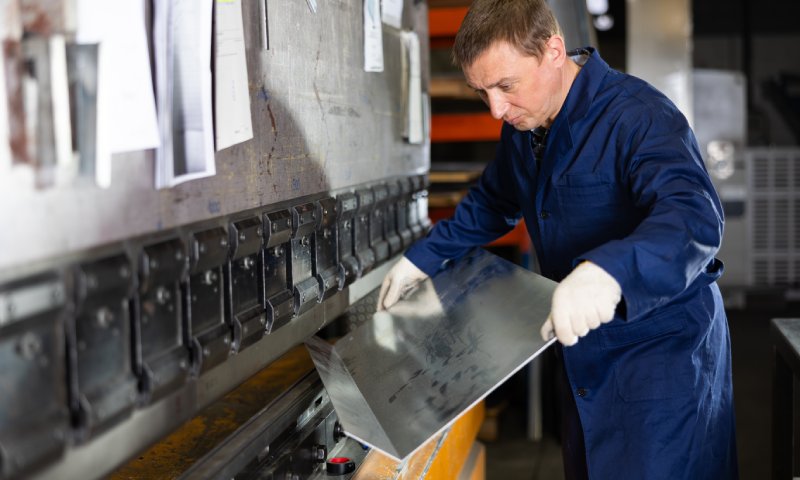4 Common Press Brake Applications in Manufacturing

Press brakes are vital assets in metal fabrication, offering unmatched precision and versatility when forming metal sheets and plates. Used across numerous industries, these machines allow fabricators to efficiently shape materials for a wide variety of uses. Let’s explore four common press brake applications in manufacturing.
Automotive Industry
The automotive industry relies heavily on press brakes to create complex, precise components that are vital for vehicle production. Press brakes shape everything from inner body structures to exterior panels, such as door frames, hoods, and trunk lids. The ability to precisely manipulate sheet metal ensures high performance and compatibility, meeting the industry’s rigorous standards. Manufacturers leverage the flexibility of press brakes to adapt to the constantly evolving designs of modern vehicles while maintaining cost-efficient production processes.
Aerospace Industry
The aerospace industry demands unparalleled precision and quality when it comes to manufacturing aircraft components, and press brakes are up to the task. These machines are instrumental in forming structural components such as fuselage parts, wing panels, and airframe reinforcements. Unlike many industries, aerospace fabrication often involves specialized materials like titanium and aluminum alloys known for their strength-to-weight ratios. The accuracy of press brakes ensures that these materials are shaped to exact specifications, contributing to safety and performance in aircraft. With the global aviation market expanding, the role of press brakes continues to grow in significance for fabricators catering to this high-tech industry.
Construction Industry
Press brakes are indispensable in the construction industry, particularly for creating structural metal components used in buildings, bridges, and other critical infrastructure. Commonly, these machines are employed to bend heavy-duty metal sheets into beams, brackets, and panels that meet specific architectural and structural requirements. Additionally, press brakes are invaluable when producing reinforcements for steel frameworks or cladding for modern facades. The reliability and consistency offered by press brakes streamline workflows, enabling fabricators to meet tight project deadlines without compromising on quality or accuracy.
General Manufacturing
Beyond specialized industries, press brakes find broad applications in general manufacturing. From custom enclosures and cabinets to household appliances and industrial machinery, press brakes shape components that are part of everyday life. This versatility is one of the reasons why it’s important to understand how press brakes work—they can be adjusted to handle varied materials and project requirements. Their ability to create consistent bends and intricate details makes them a go-to technology for manufacturers producing a diverse array of products.
With so many press brake applications in manufacturing, it’s easy to see why they are essential in today’s industrial landscape. As technology within the field evolves, press brakes are becoming even more efficient and intuitive, offering exciting possibilities for future applications. Investing in this precision tool allows fabricators to stay competitive across industries, meeting rapidly changing demands while delivering exceptional results.
Would you like to receive similar articles by email?





